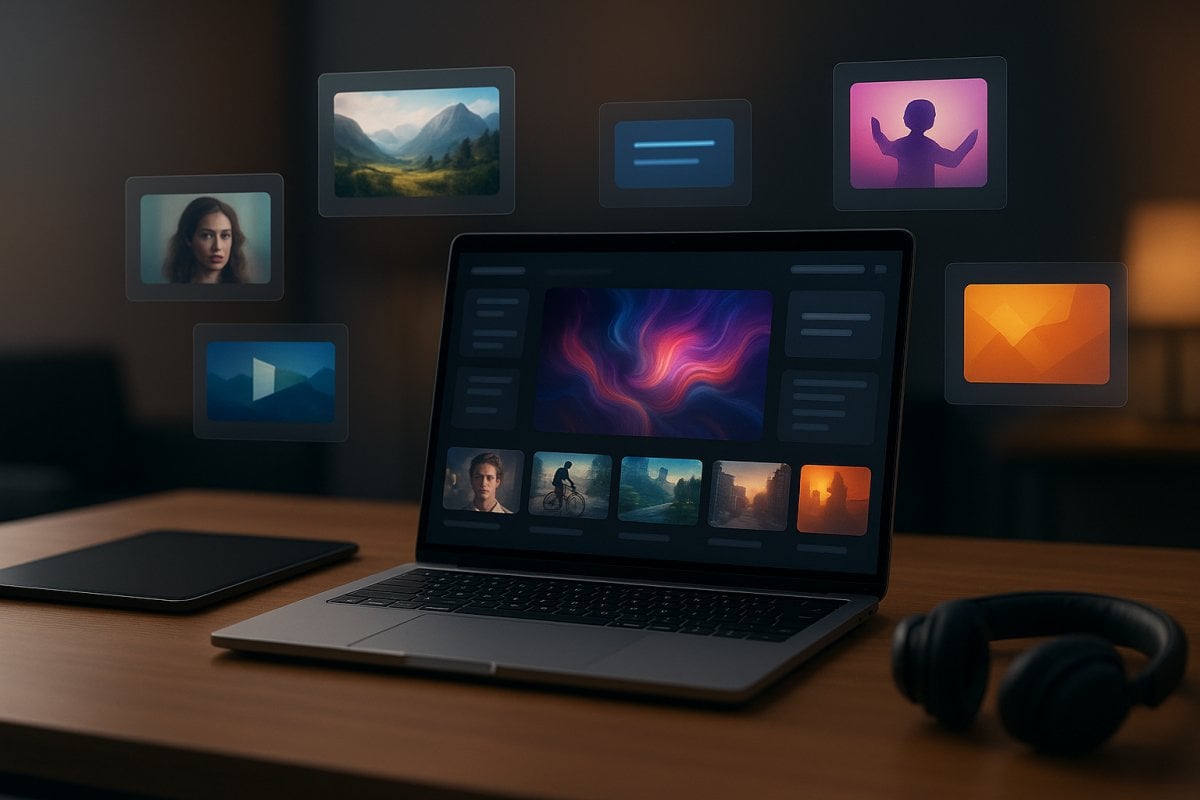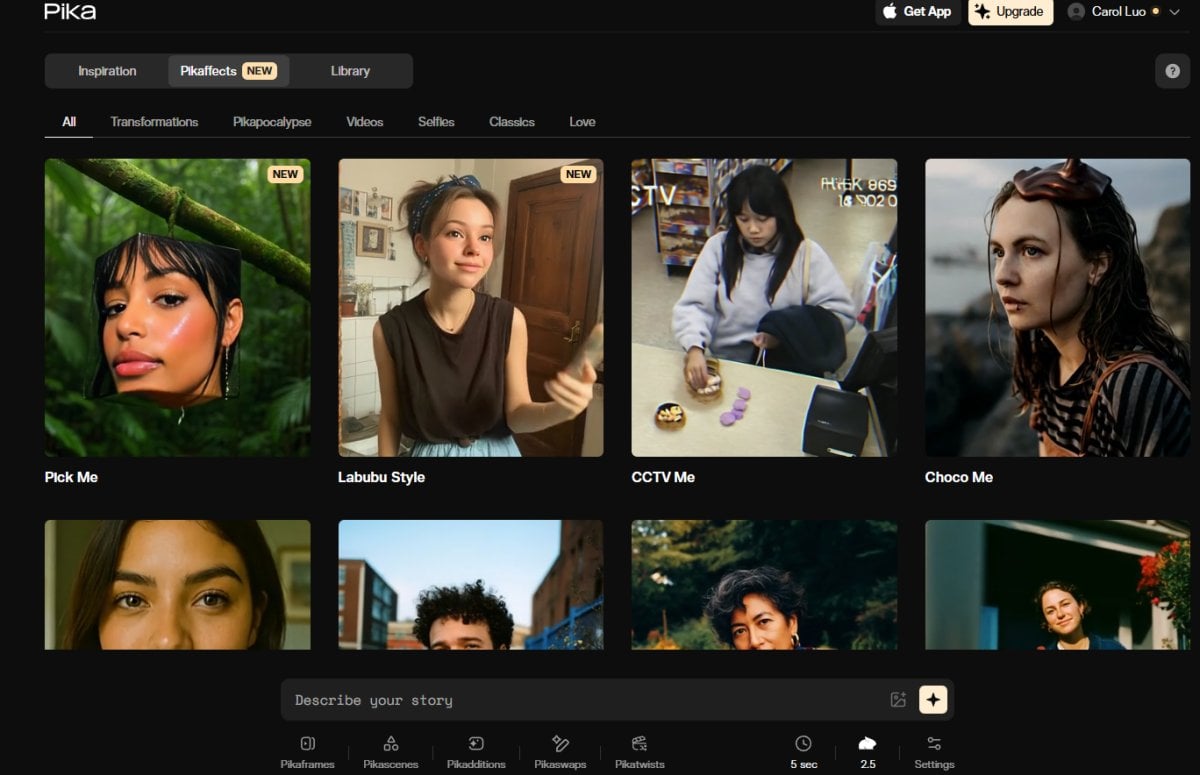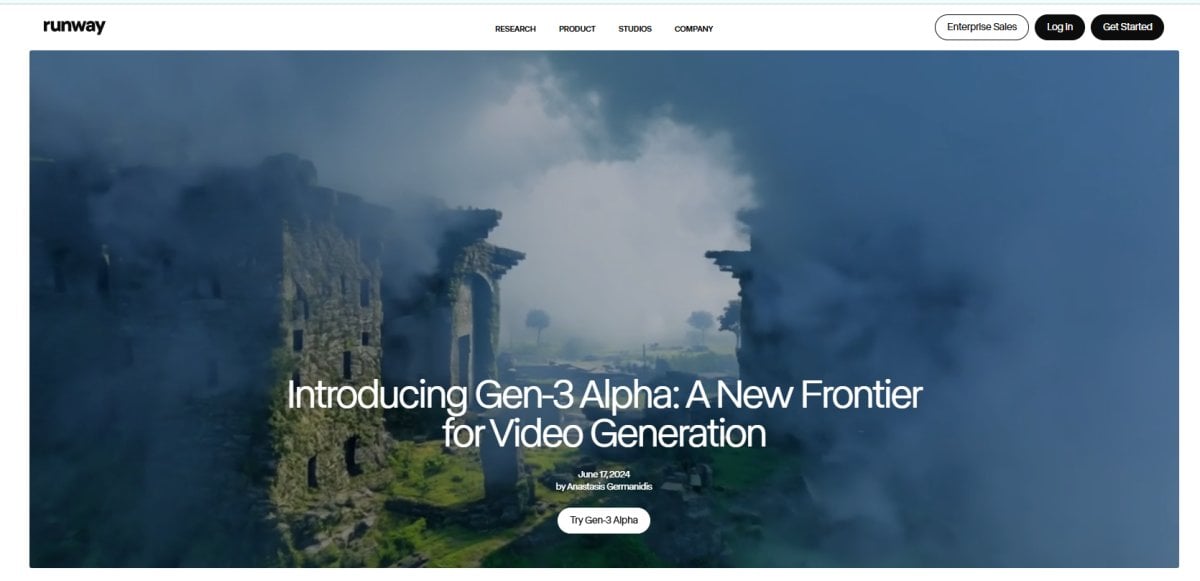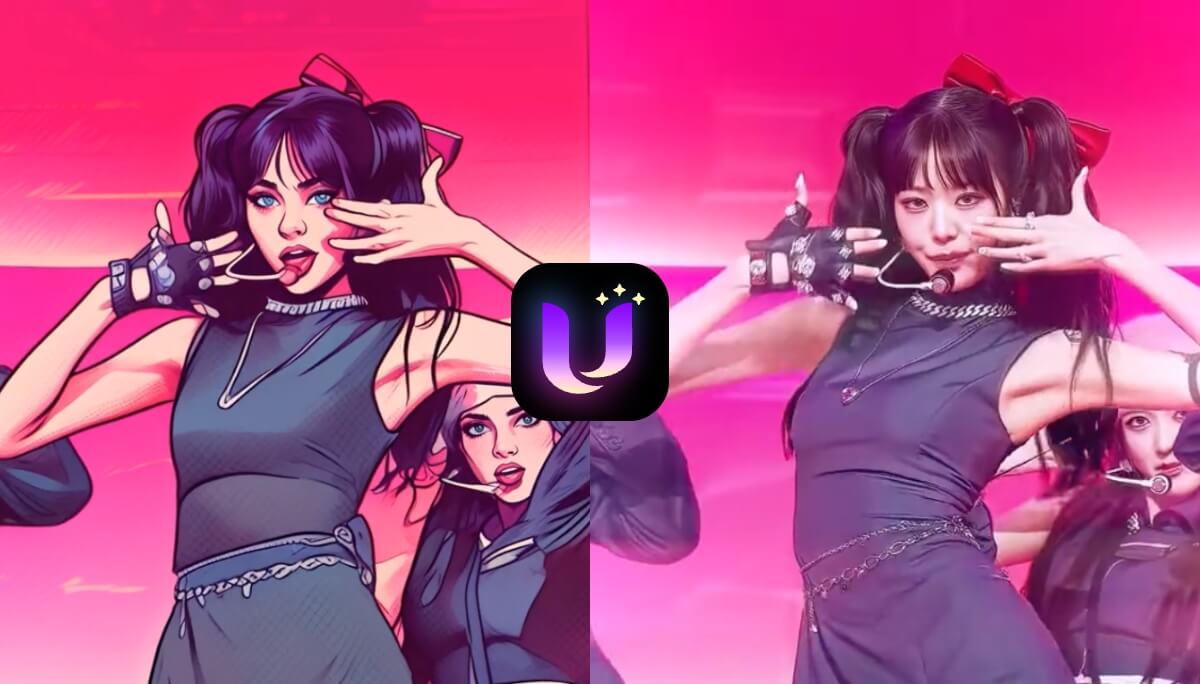Pika.art Best Alternatives 2026: How to Pick AI Video Tool

- 1. Where Pika.art Shines (and Where It Starts to Struggle)
- 2. How to Think About Pika.art Alternatives
- 3. Key Pika.art Alternatives (Including GoEnhance AI)
- 3.1 GoEnhance AI – All-Round Creative Suite and Pipeline “Glue”
- 3.2 Runway Gen-3 – Cinematic Control and Industry Workflows
- 3.3 Luma Dream Machine – Motion and Physics for Short, Artistic Clips
- 3.4 Kaiber – Music-Driven, Stylized Video and Animation
- 3.5 HeyGen – When the “Presenter” Matters More Than the Background
- 4. Example Workflows That Mix Pika.art and Its Alternatives
- 5. How to Test Pika.art Alternatives Without Burning Your Budget
- 6. Final Thoughts: Don’t Look for a “Pika Killer”
Pika.art is a strong AI video generator, but in 2025 it works best as part of a toolkit rather than the single tool you rely on for everything. Many creators now combine Pika with other platforms for cinematic control, animation, avatars, or post-processing, and that mix usually beats any one app on its own.
This guide looks at where Pika.art fits, where it struggles, and how competing tools—including GoEnhance AI—can realistically act as alternatives or complements.

1. Where Pika.art Shines (and Where It Starts to Struggle)
Pika.art is at its best when you need quick, visually striking short clips, but it’s less ideal when you care about long-form control, repeatability, or tight budgets over time.
Pika 2.5 aims at ultra-realistic short videos with improved physics and prompt adherence, and runs on a credit-based system with multiple paid tiers that unlock commercial use. For solo creators and small teams, that’s a convenient way to turn prompts or images into 3–6 second shots without learning a video editor.
Where people start looking for alternatives is fairly consistent:
- Cost and credits over months – Reviews of Pika’s pricing point out that while Pro plans (around 2,300 credits/month) are reasonable at first, heavy use can still become expensive compared with flat-rate or higher-throughput tools.
- Storytelling and continuity – Multi-shot stories, recurring characters, and complex camera work are still difficult to control in a pure “single prompt per clip” system.
- Special formats – Corporate training, avatar explainers, or heavily stylized animation often need tools built specifically for those use cases.
Pika.art is a good default sandbox, but once you start working for clients or releasing on a schedule, its limits nudge you toward more specialized tools.
2. How to Think About Pika.art Alternatives
The best Pika.art alternative isn’t the model with the most hype; it’s the tool that matches your actual projects, cadence, and tolerance for complexity.
A simple decision frame helps:
-
What are you making most often?
- Social clips and short ads
- Music videos, fan edits, or stylized reels
- Tutorials and training with a “presenter”
- Animated or cartoonified versions of existing footage
-
How often do you ship?
- Occasionally for passion projects
- Weekly for a channel
- Daily/weekly for paying clients
-
What matters most today?
- Lowest cost per usable minute
- Cinematic realism and camera control
- Brand/character consistency
- Zero-friction editing and templates
Independent testers now run the same prompts through several tools and compare realism, motion, speed, and costs; their conclusions are rarely “one winner for everyone”. :contentReference[oaicite:2]{index=2} Using that mindset, you can see Pika.art as one node in an ecosystem, not the center of the universe.
3. Key Pika.art Alternatives (Including GoEnhance AI)
There is no single “Pika killer”; instead, several tools beat it on specific jobs—cinematic shots, animation, avatars, or all-in-one workflows.
Below are five concrete alternatives and why each can reasonably replace (or complement) Pika.art in real projects.
3.1 GoEnhance AI – All-Round Creative Suite and Pipeline “Glue”
GoEnhance AI is best viewed as a flexible hub that combines generation and enhancement rather than a direct clone of Pika.art.
What it is
GoEnhance bundles multiple modules—such as an AI video generator, a video to animation converter, and niche effects like an AI kissing tool—plus image and video upscalers, color correction, and restoration features. That makes it a convenient place to prep assets before or after running them through video models elsewhere.
Strengths
- Pipeline friendly – Good for turning rough clips into cleaner, sharper footage and for converting regular videos into stylized animation when Pika’s default style doesn’t match your brand.
- Image + video in one place – Helpful if your workflow mixes thumbnails, stills, and short clips.
- Special effects – Focused tools for specific social content (romantic, stylized, or meme-like moments) that Pika doesn’t directly target.
Limitations
- It’s not a research lab model like Runway Gen-3 Alpha or Luma Dream Machine, so you won’t get bleeding-edge cinematic control from a single text prompt.
- You still need basic editing literacy to get the most out of combining several modules.
Why it can replace or complement Pika.art
For many creators, GoEnhance AI can take over the “finishing” and “styling” jobs that Pika isn’t built for—upscaling, restoration, color fixes, and animation conversions—while also covering a lot of general generation needs. In small teams, it can comfortably serve as the main video tool, with Pika kept around only for certain experimental shots.
3.2 Runway Gen-3 – Cinematic Control and Industry Workflows

Runway’s Gen-3 Alpha model is a strong Pika.art alternative when you care about cinematic motion, shot-to-shot consistency, and integration with editing workflows.
What it is
Runway provides text-to-video and video-to-video models, with Gen-3 Alpha focused on higher-fidelity, controllable cinematic clips. The research notes emphasize fine-grained temporal control, key-framing, and complex camera moves.
Strengths
- Cinematic realism – Better control over camera motion, perspective, and scene continuity than Pika in many test reports.
- Video-to-video workflows – You can restyle or refine existing footage rather than always starting from text.
- Editor-friendly – Designed to sit alongside traditional post-production tools, not just as a toy generator.
Limitations
- Higher learning curve for non-technical users.
- Typically more expensive per minute of high-quality output than lighter tools.
Why it can replace Pika.art
If your bottleneck is quality and control rather than “how fast can I prototype an idea,” Runway can realistically become your primary generator, with Pika relegated to quick concept tests.
3.3 Luma Dream Machine – Motion and Physics for Short, Artistic Clips

Luma’s Dream Machine is a compelling alternative when you want fluid motion and strong physical coherence in short, stylized or cinematic scenes.
What it is
Dream Machine is a text-to-video model from Luma Labs, noted for realistic motion and a focus on storytelling. Newer Ray-series models are praised for improved physics and HDR-style realism in independent reviews.
Strengths
- Smooth, believable movement – Good for shots where the path of the camera or character motion matters.
- Fast iteration – Web and iOS access with the ability to quickly regenerate variations.
- Story-driven mindset – Designed with narrative sequences and transitions in mind.
Limitations
- Like Pika, it can still struggle with text in frame and very intricate details.
- You still need an external editor and pipeline for longer projects.
Why it can replace Pika.art
For directors and artists who care more about movement and cinematic feel than about Pika’s built-in “Pikaffects” and effects templates, Dream Machine can step in as the main “look generator,” with Pika used only when its specific styles are desired.
3.4 Kaiber – Music-Driven, Stylized Video and Animation
Kaiber is a strong pick when your priority is stylized music videos, beat-synced edits, and consistent visual themes across a song or campaign.
What it is
Kaiber’s Superstudio lets you storyboard, animate, and refine motion on a single canvas, with features for dynamic video creation and beat-synced editing.
Strengths
- Music-first workflow – Automatic beat sync lets you match cuts and motion to BPM in minutes, which is invaluable for musicians and editors without deep NLE experience.
- Stylized looks – Strong at turning images, logos, or simple footage into unified visual styles.
- Good for repurposing footage – Many users start from existing video and “remix” it, which meshes well with typical social workflows.
Limitations
- Less suited for pure photorealistic storytelling compared with Runway or Luma.
- Interface and results are optimized around music/video creators, not general explainer content.
Why it can replace Pika.art
If most of your Pika usage is “turn a track and some visuals into a cool edit,” Kaiber can take over that entire job and do it better, while Pika becomes optional.
3.5 HeyGen – When the “Presenter” Matters More Than the Background
HeyGen isn’t trying to compete with Pika on wild visuals; instead, it replaces cameras and presenters for training, sales, and explainer videos.
What it is
HeyGen turns text, audio, or a short selfie into talking avatars with synced lip movement, and handles the script-to-video process with templates, captions, and easy exports.
Strengths
- Camera-free production – Ideal if you don’t want to appear on camera but need a human-like presenter.
- Multi-language, multi-voice – Convenient for global teams and repeated updates.
- Template-driven – Fast to roll out new FAQ, training, or onboarding content.
Limitations
- Visual creativity is limited; the focus is the talking avatar, not complex cinematic shots.
- Not a replacement for high-end brand or narrative work where style matters more than clarity.
Why it can replace Pika.art
If you’re currently forcing Pika into “fake presenter” roles just to avoid filming, HeyGen can fully replace that part of your workflow, leaving Pika for b-roll or background footage only.
4. Example Workflows That Mix Pika.art and Its Alternatives
The most sustainable approach isn’t choosing one tool forever; it’s designing a workflow where tools can be swapped without breaking everything.
Here are two typical patterns:
4.1 Creator / Social Workflow
- Draft a short script and shot list.
- Use Pika.art or Luma Dream Machine for visually intense shots.
- Use Kaiber to create beat-synced edits for music-centric posts.
- Run key clips through GoEnhance AI for upscaling, stabilization, or stylized animation variants.
- Finish in a lightweight editor and schedule posts.
4.2 Business / Training Workflow
- Write a script and decide on languages.
- Use HeyGen for the main talking-head segments.
- Generate background or illustrative b-roll with Pika or Runway.
- Clean and enhance everything in GoEnhance AI (colors, sharpness, special effects where needed).
- Edit into complete modules with captions and chapter markers.
In both cases, Pika.art is just one worker on the team, not the entire production line.
5. How to Test Pika.art Alternatives Without Burning Your Budget
You get the clearest picture of Pika vs its competitors when you run disciplined, repeatable tests instead of random prompts.
A simple method:
-
Fix a single test brief
Use the same 6–8 second scene description (and reference image if needed) across Pika, Runway, Luma, etc. -
Score outputs on real-world criteria
- Usable seconds per clip
- Number of obvious glitches
- Ease of reproducing a similar look (consistency)
-
Track cost per usable minute
Compare subscription + credits to how many solid clips you actually keep, not just how many generations you run. -
Document everything
If you keep a small table of prompts, tools, scores, and costs for a few weeks, the “right” Pika.art alternative usually reveals itself without drama.
For broader context on how different models stack up, you can cross-check your impressions with independent benchmarks, such as
Tom’s Guide’s hands-on comparison or
long-form breakdowns of Pika pricing and alternatives.
6. Final Thoughts: Don’t Look for a “Pika Killer”
The sensible conclusion in 2025 is that Pika.art is a great idea and style lab, but your main production stack will probably include at least one cinematic tool (Runway or Luma), one structured tool for business content (like HeyGen), and one suite that glues everything together (such as GoEnhance AI).
If you design your workflow so that assets, prompts, and exports stay portable, you’ll never be locked in—and you can swap Pika.art or any alternative out the day something better arrives.



